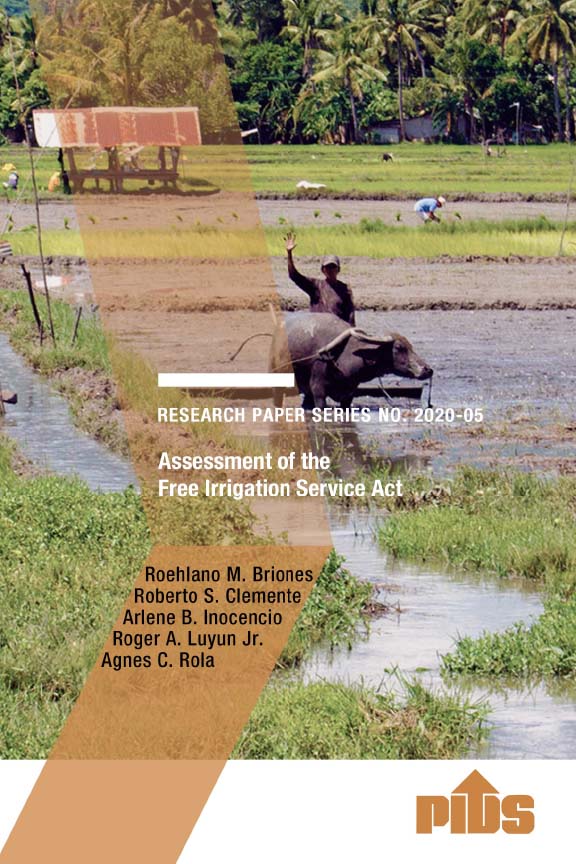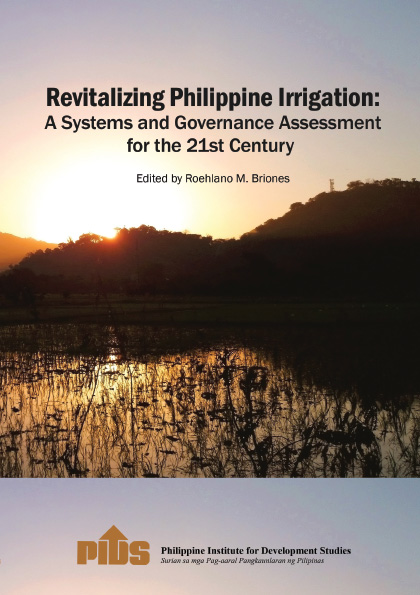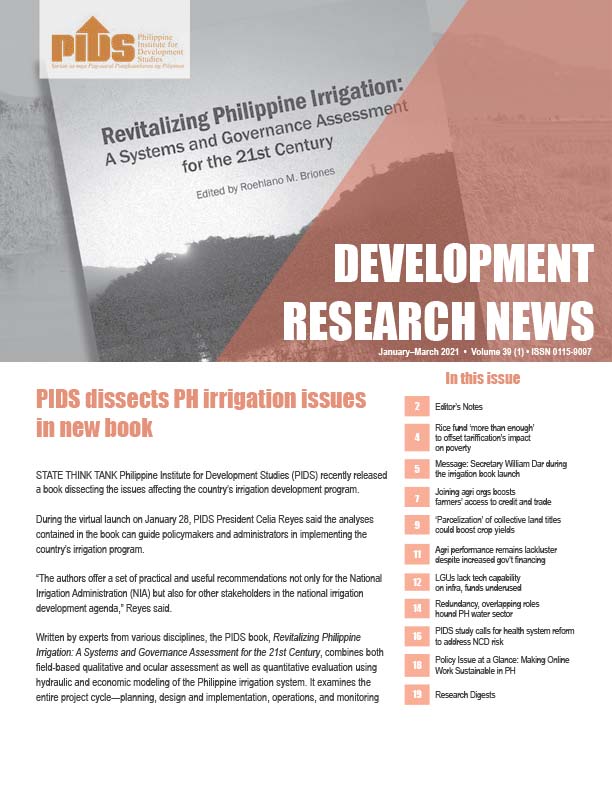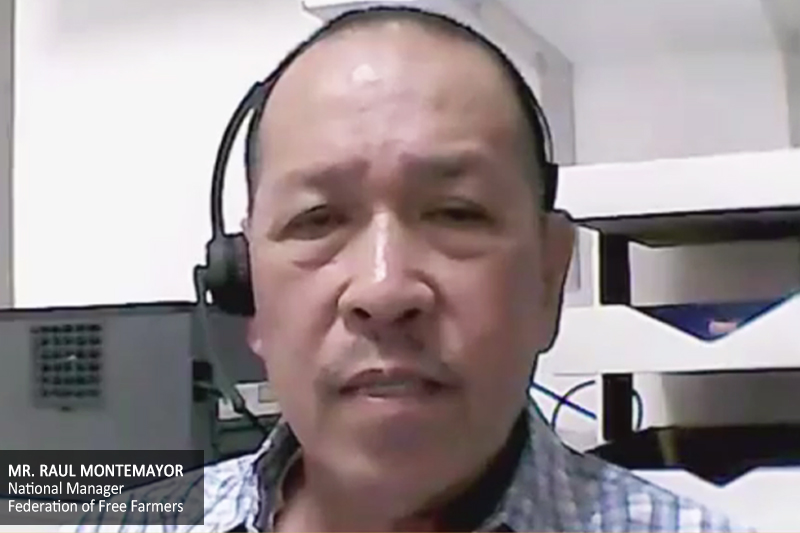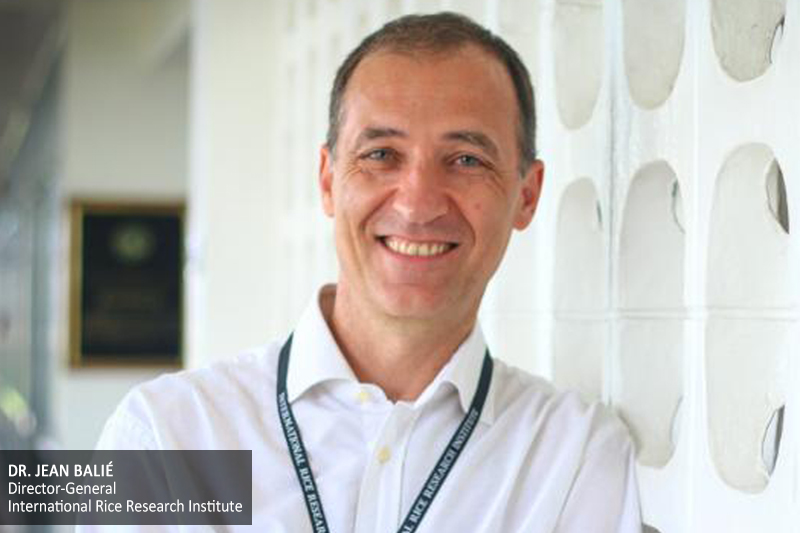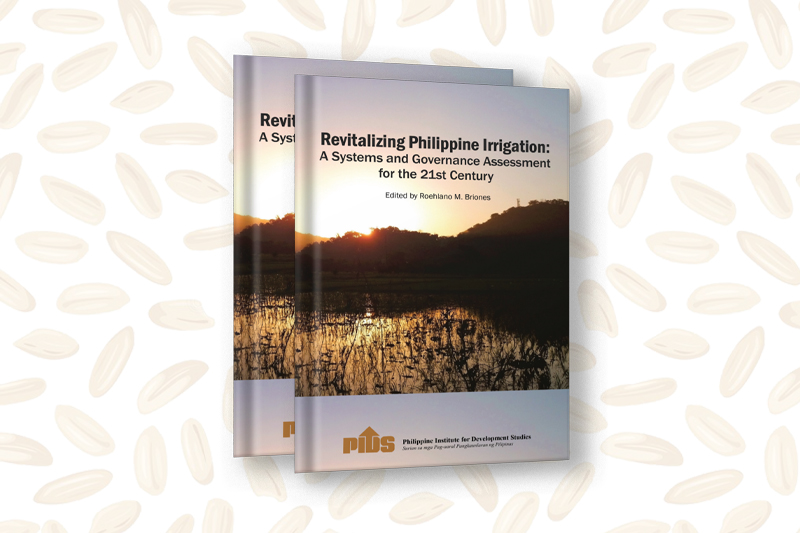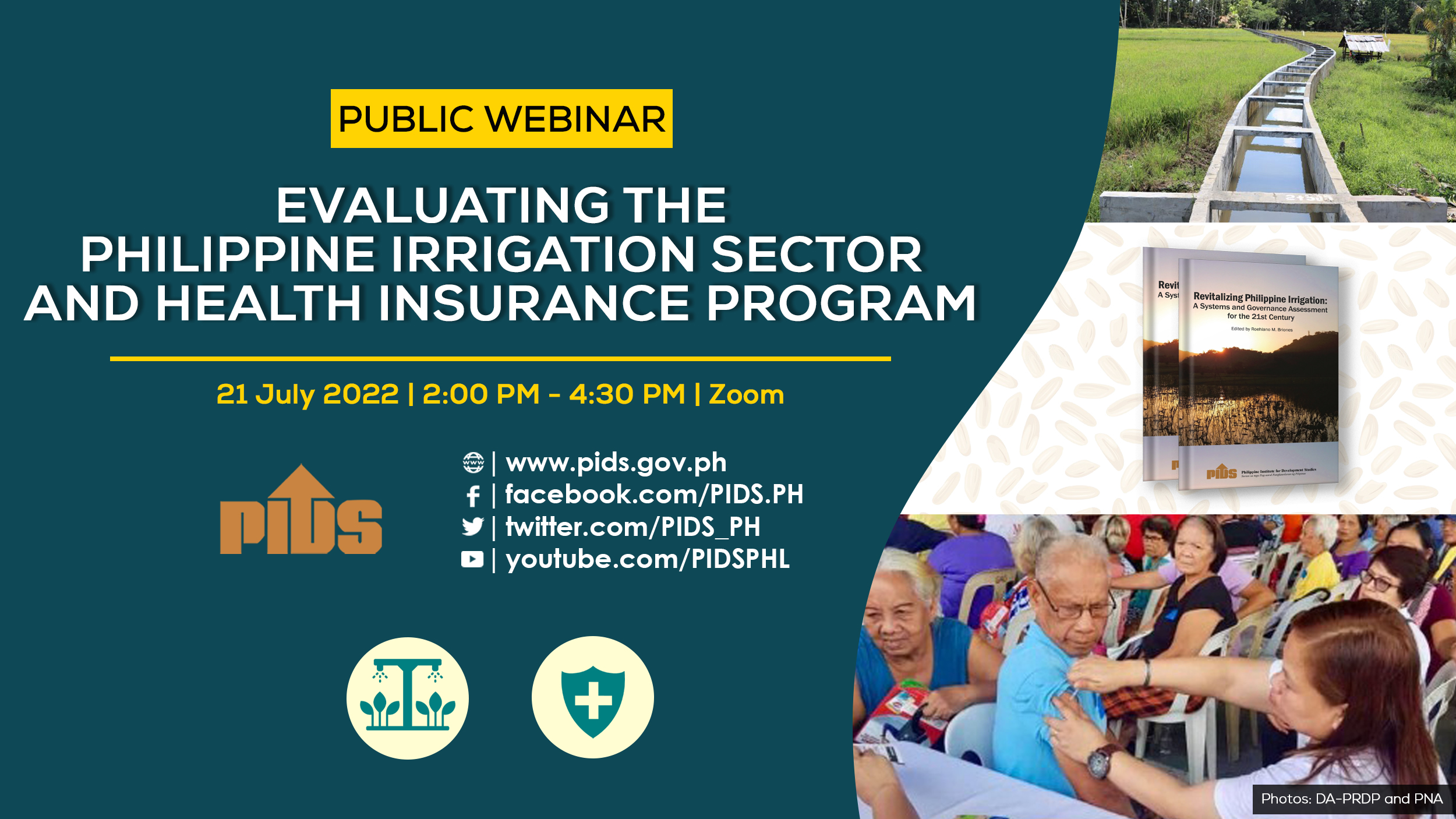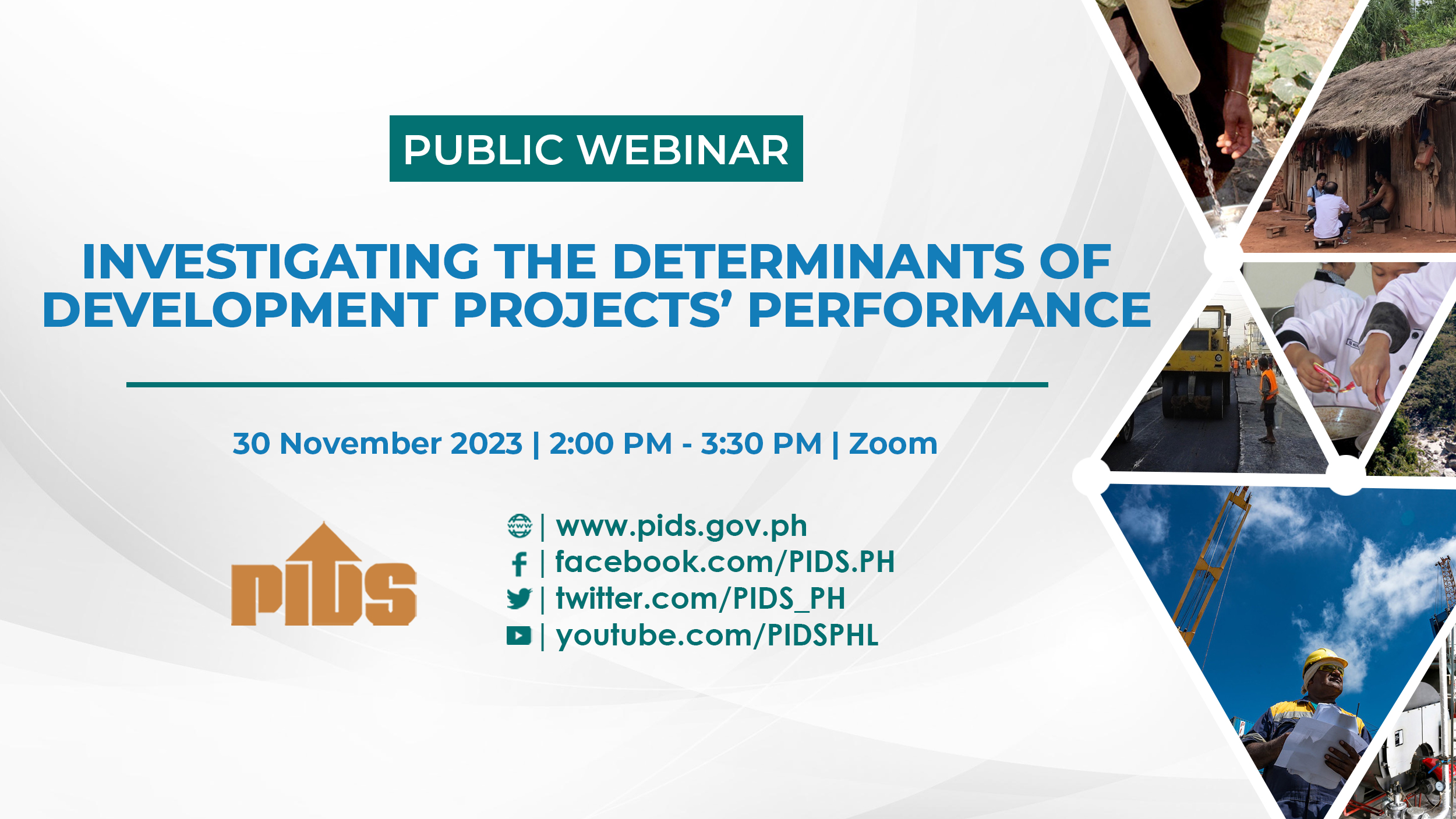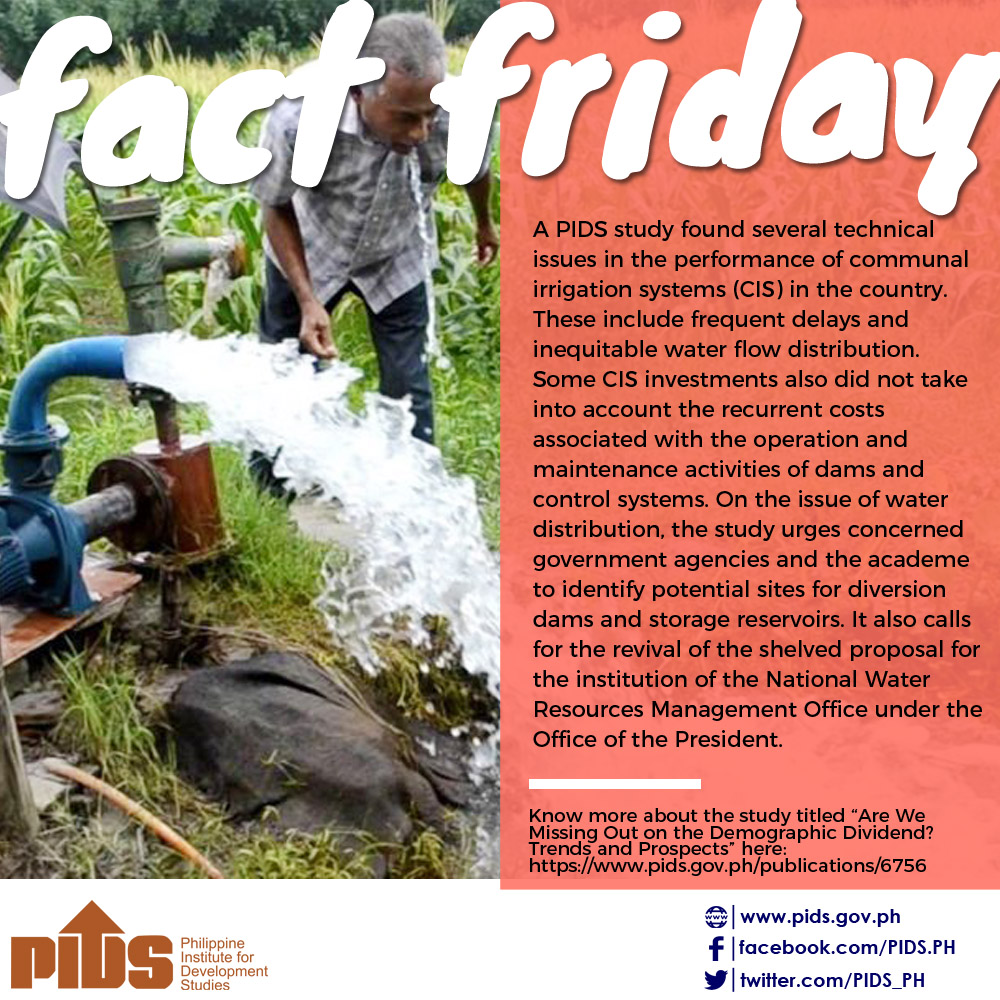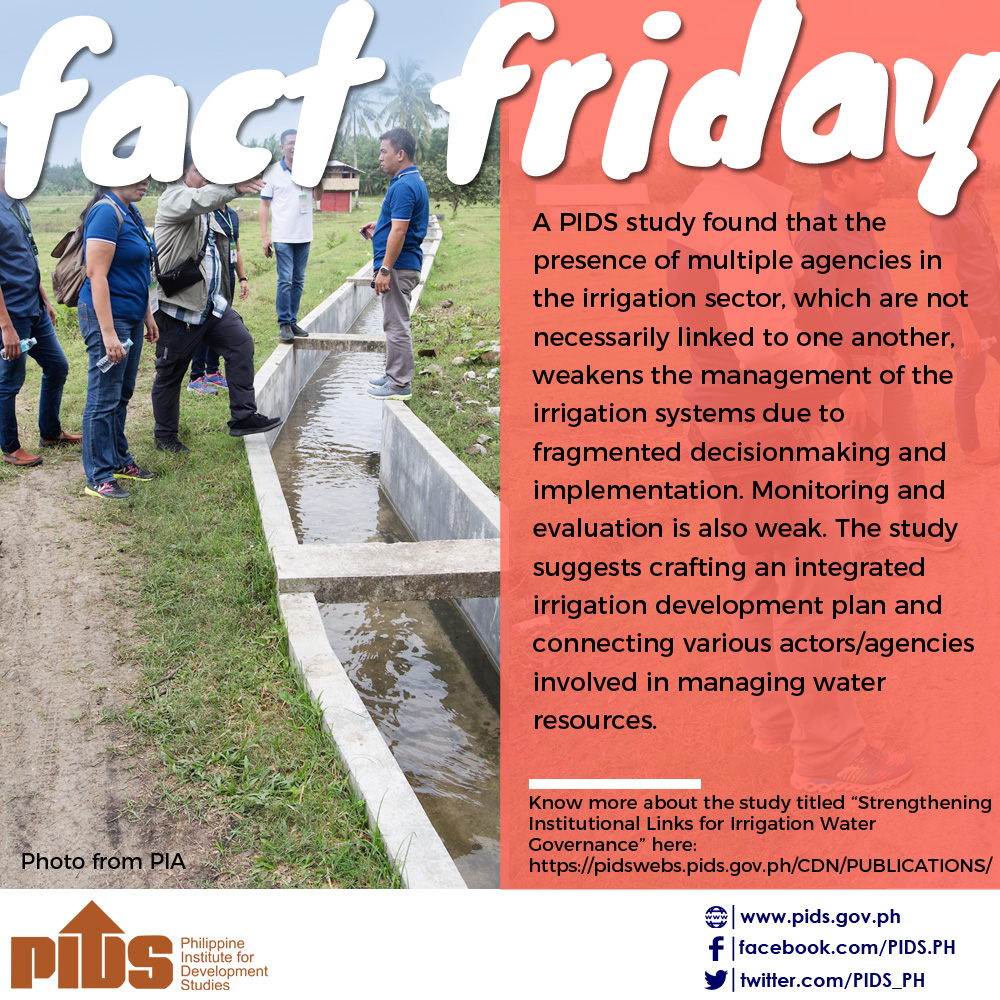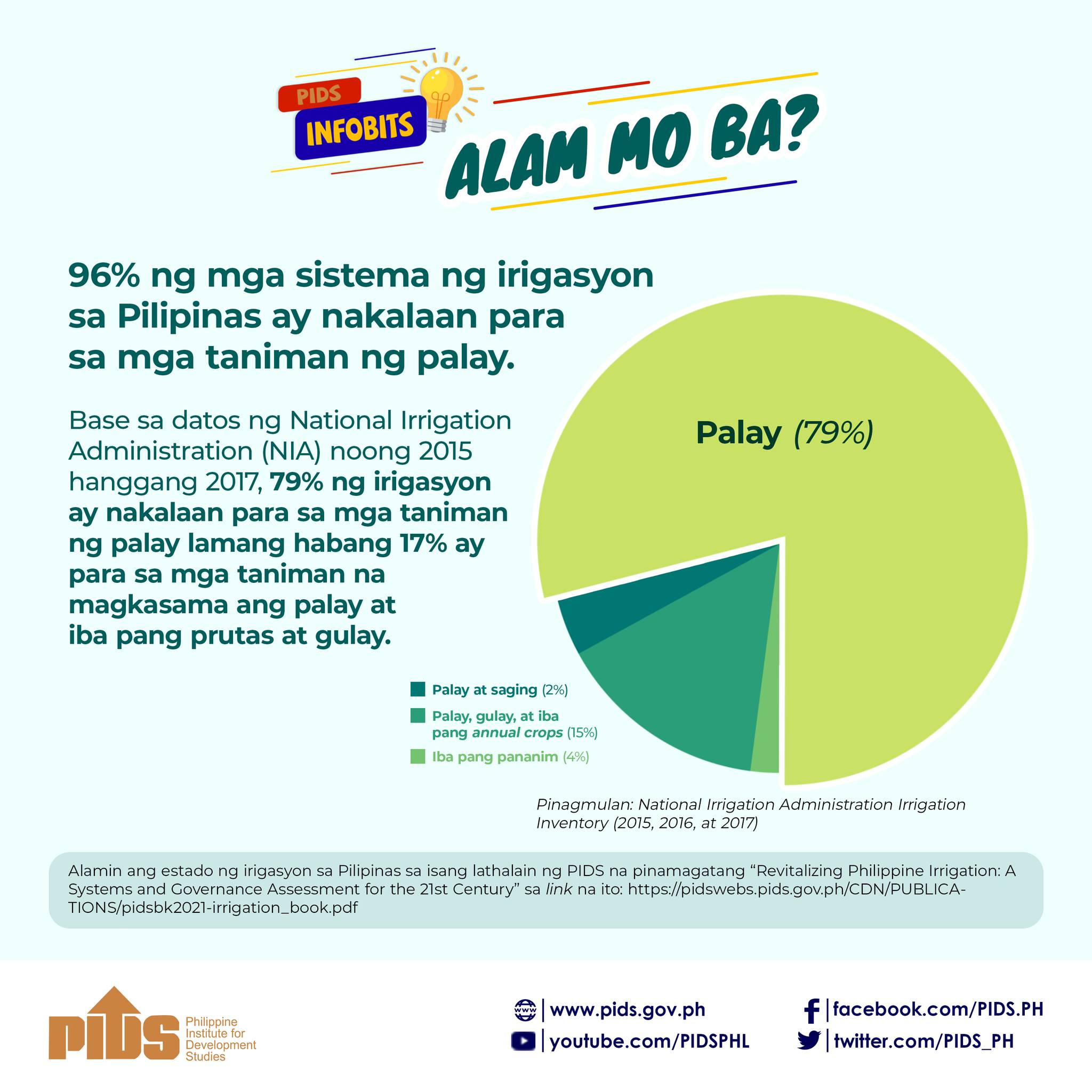A study by state think tank Philippine Institute for Development Studies (PIDS) has identified some serious technical problems and issues in the country`s irrigation systems that need to be resolved immediately.
The PIDS study noted that irrigation has been receiving the largest share of the total agriculture budget but its performance has always been below expectation. The proposed 2015 national budget allocated PHP 29 billion for the National Irrigation Administration (NIA), which undertakes all government irrigation projects.
For years, the actual irrigated areas for most irrigation systems in the country had all been consistently below the target. The study pointed out that this has been due mainly to overestimation of irrigable areas by not fully accounting for built-up areas or urbanization, flooded areas during the wet season, and elevated areas that cannot be reached by gravity irrigation systems.
The findings of this study titled, "Appraisal of Methodology in Estimating Irrigable Areas and Processes of Evaluating Feasibility of NIA Irrigation Projects", commissioned by the National Economic and Development Authority and the Department of Budget and Management to PIDS, are intended to be used as inputs to the budget process. The study looked into four irrigation systems in the country, namely, Angat-Maasim River Irrigation System (AMRIS) in Bulacan, Balog-Balog Irrigation System in Tarlac, Pampanga Delta Irrigation System, and Casecnan-Upper Pampanga River Irrigation System (UPRIS) in Pampanga.
For the Angat-Maasim River Irrigation System, which has service area of 31,400 hectares, the actual irrigated area had declined to an average of about 17,500 hectares in the last 10 years from the original 22,000 hectares or so in the 1970s. According to the study, a total of 8,000 hectares of the 31,400 hectares target area in AMRIS is not irrigable.
`About 3,500 hectares of the total area has an elevation of 19 meters and thus cannot be irrigated from the Bustos dam, which has a maximum crest elevation of 18.5 meters. In addition, around 4,500 hectares of the AMRIS area had been built up with residential, commercial, and industrial infrastructure,` explained study authors Cristina David and Guillermo Tabios, both consultants of PIDS.
There is also a perceived competing water use, as in the case of AMRIS, between domestic water supply and irrigation water. But it appears that both can be supplied by the Angat Reservoir as a common water source. However, during critical dry periods such as El Niño events, there may be a need to curtail irrigation water deliveries in accordance with the Philippine Water Code of 1976, which requires that domestic water supply be given higher priority than irrigation water supply.
The same set of issues persists in the Pampanga Delta Irrigation System, which has a design service area of 11,540 hectares. Based on the data from the NIA, only around 1,000 hectares or 8 percent of the target coverage area during wet season and 3,800 hectares or about 30 percent of the target coverage area during dry season. Using a geographic information system (GIS) map of this area, it was found that a total of over 6,000 areas cannot be irrigated because these places have either become urbanized, converted to fish pens, have higher elevation than the water source, or usually become flooded during the wet season.
Meanwhile, Balog-Balog and Casecnan irrigation areas cover or overlap within two watershed boundaries. Since both systems deliver water by gravity, the efficiency of the design of these irrigation systems where the canal network traverses another watershed is questionable.
Likewise, for the proposed PHP 8-billion Balog-Balog Dam, David and Tabios pointed out some serious technical and financial issues that NIA should resolve before proceeding with the construction of the dam.
First, it was pointed out that the budget for the construction of this massive dam with a height of 105 meters and a crest length of 1.4 kilometer appears to be underestimated.
"The proposed Kaliwa Dam of the Metropolitan Waterworks and Sewerage System (MWSS), which will be 62 meters high with a crest length of 240 meters, costs PHP 4.1 billion. When translated to cost per dam face area, the cost is PHP 275,530 per square meter. Likewise, the proposed Laiban Dam of MWSS, which will be 115 meters high with crest length of 650 meters, costs PHP 10.8 billion, translating to a unit cost of PHP 144,481 per square meter dam face. In the case of Balog-Balog Dam, unit cost is only at PHP 55,478 per square meter dam face," the authors explained.
David and Tabios also contended that the spillway design capacity of the Balog-Balog Dam at a maximum outflow of 3,250 cubic meters per second, associated with a 20-year return period flood, is low.
"Normally, a dam this size is designed to have a spillway capacity associated with the probable maximum flood of between 100-year and 200-year return period floods. A dam being overtopped because of an inadequate spillway is an unacceptable risk," they stated in the report.
In terms of water requirement for the Balog-Balog Irrigation System, NIA`s in-house engineering consulting group, NIA Consult, estimated that the average all-year round water requirement for paddy rice was about 26 cubic meters per second for the total irrigation service area of 34,410 hectares.
"This appears to be too low considering that paddy rice irrigation water requirement for Angat-Maasim River Irrigation System ranges from 0.00112 to 0.00167 cubic meter per second per hectare, which translates to a range of 38.54–57.46 cubic meters per second for Balog-Balog`s design service area," the researchers stated.
Given all these issues, the authors observed that `NIA seems to be satisfied with studies it has conducted to support the funding and implementation of the dam project. The fundamental issue here is whether NIA, the implementing agency of irrigation projects, should also conduct the feasibility studies, including planning, design, and operations, since it is in its interest to build and implement the irrigation projects to begin with.
You may download the full study from this link: http://dirp3.pids.gov.ph/webportal/CDN/PUBLICATIONS/pidspn1420.pdf
The PIDS study noted that irrigation has been receiving the largest share of the total agriculture budget but its performance has always been below expectation. The proposed 2015 national budget allocated PHP 29 billion for the National Irrigation Administration (NIA), which undertakes all government irrigation projects.
For years, the actual irrigated areas for most irrigation systems in the country had all been consistently below the target. The study pointed out that this has been due mainly to overestimation of irrigable areas by not fully accounting for built-up areas or urbanization, flooded areas during the wet season, and elevated areas that cannot be reached by gravity irrigation systems.
The findings of this study titled, "Appraisal of Methodology in Estimating Irrigable Areas and Processes of Evaluating Feasibility of NIA Irrigation Projects", commissioned by the National Economic and Development Authority and the Department of Budget and Management to PIDS, are intended to be used as inputs to the budget process. The study looked into four irrigation systems in the country, namely, Angat-Maasim River Irrigation System (AMRIS) in Bulacan, Balog-Balog Irrigation System in Tarlac, Pampanga Delta Irrigation System, and Casecnan-Upper Pampanga River Irrigation System (UPRIS) in Pampanga.
For the Angat-Maasim River Irrigation System, which has service area of 31,400 hectares, the actual irrigated area had declined to an average of about 17,500 hectares in the last 10 years from the original 22,000 hectares or so in the 1970s. According to the study, a total of 8,000 hectares of the 31,400 hectares target area in AMRIS is not irrigable.
`About 3,500 hectares of the total area has an elevation of 19 meters and thus cannot be irrigated from the Bustos dam, which has a maximum crest elevation of 18.5 meters. In addition, around 4,500 hectares of the AMRIS area had been built up with residential, commercial, and industrial infrastructure,` explained study authors Cristina David and Guillermo Tabios, both consultants of PIDS.
There is also a perceived competing water use, as in the case of AMRIS, between domestic water supply and irrigation water. But it appears that both can be supplied by the Angat Reservoir as a common water source. However, during critical dry periods such as El Niño events, there may be a need to curtail irrigation water deliveries in accordance with the Philippine Water Code of 1976, which requires that domestic water supply be given higher priority than irrigation water supply.
The same set of issues persists in the Pampanga Delta Irrigation System, which has a design service area of 11,540 hectares. Based on the data from the NIA, only around 1,000 hectares or 8 percent of the target coverage area during wet season and 3,800 hectares or about 30 percent of the target coverage area during dry season. Using a geographic information system (GIS) map of this area, it was found that a total of over 6,000 areas cannot be irrigated because these places have either become urbanized, converted to fish pens, have higher elevation than the water source, or usually become flooded during the wet season.
Meanwhile, Balog-Balog and Casecnan irrigation areas cover or overlap within two watershed boundaries. Since both systems deliver water by gravity, the efficiency of the design of these irrigation systems where the canal network traverses another watershed is questionable.
Likewise, for the proposed PHP 8-billion Balog-Balog Dam, David and Tabios pointed out some serious technical and financial issues that NIA should resolve before proceeding with the construction of the dam.
First, it was pointed out that the budget for the construction of this massive dam with a height of 105 meters and a crest length of 1.4 kilometer appears to be underestimated.
"The proposed Kaliwa Dam of the Metropolitan Waterworks and Sewerage System (MWSS), which will be 62 meters high with a crest length of 240 meters, costs PHP 4.1 billion. When translated to cost per dam face area, the cost is PHP 275,530 per square meter. Likewise, the proposed Laiban Dam of MWSS, which will be 115 meters high with crest length of 650 meters, costs PHP 10.8 billion, translating to a unit cost of PHP 144,481 per square meter dam face. In the case of Balog-Balog Dam, unit cost is only at PHP 55,478 per square meter dam face," the authors explained.
David and Tabios also contended that the spillway design capacity of the Balog-Balog Dam at a maximum outflow of 3,250 cubic meters per second, associated with a 20-year return period flood, is low.
"Normally, a dam this size is designed to have a spillway capacity associated with the probable maximum flood of between 100-year and 200-year return period floods. A dam being overtopped because of an inadequate spillway is an unacceptable risk," they stated in the report.
In terms of water requirement for the Balog-Balog Irrigation System, NIA`s in-house engineering consulting group, NIA Consult, estimated that the average all-year round water requirement for paddy rice was about 26 cubic meters per second for the total irrigation service area of 34,410 hectares.
"This appears to be too low considering that paddy rice irrigation water requirement for Angat-Maasim River Irrigation System ranges from 0.00112 to 0.00167 cubic meter per second per hectare, which translates to a range of 38.54–57.46 cubic meters per second for Balog-Balog`s design service area," the researchers stated.
Given all these issues, the authors observed that `NIA seems to be satisfied with studies it has conducted to support the funding and implementation of the dam project. The fundamental issue here is whether NIA, the implementing agency of irrigation projects, should also conduct the feasibility studies, including planning, design, and operations, since it is in its interest to build and implement the irrigation projects to begin with.
You may download the full study from this link: http://dirp3.pids.gov.ph/webportal/CDN/PUBLICATIONS/pidspn1420.pdf

